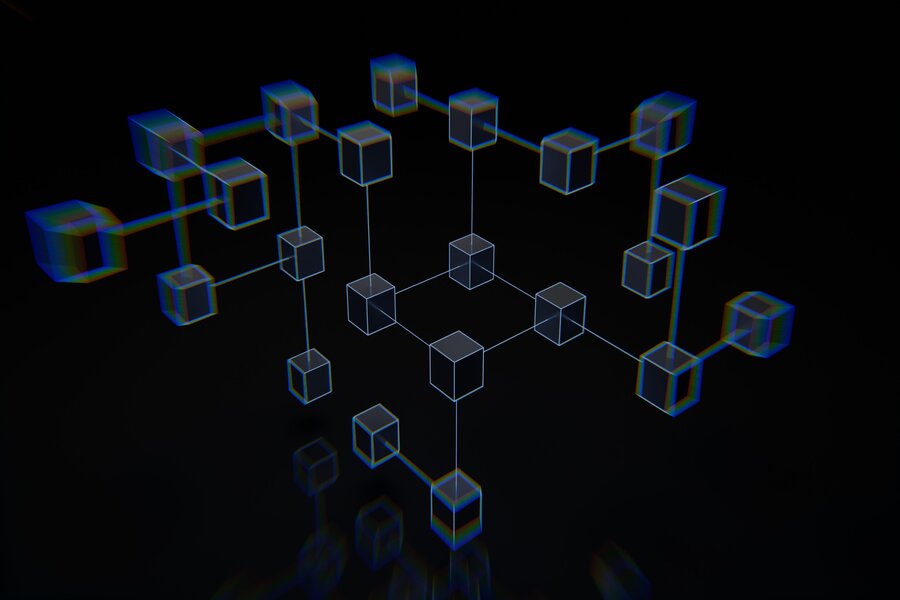Blockchain Events
Sci-Fi Blockchain Game Could Help Create The Metaverse
Published
2 years agoon
A Sci-Fi blockchain game is said to help create an unknown metaverse, how true is it, and how it can happen?
Dark Forest demonstrates how advanced cryptography may be employed in a game, as well as how blockchains could be used to host decentralized digital worlds.
When you start exploring Dark Forest, you rapidly learn how much you don’t know.
The universe is immense, and most of it is obscured by darkness. Should you accept it, your objective is to venture into the unknown, escape being annihilated by competing players who may be hiding in the shadows, and establish an empire out of the planets you discover and can claim as your own.
However, while the video game appears to look and play similarly to other online strategy games, the reality is much different.
This is due to the fact that it does not rely on the servers that power renowned online strategy games like Eve Online and World of Warcraft. Dark Forest, on the other hand, is entirely based on a blockchain, which implies that no one has any control over how it plays out.
Its early popularity reflects more than just a pleasant technique of developing games that work in an unusual way. It also demonstrates that blockchains may be used for far more fascinating and intricate applications than simply shifting digital money around, as some blockchain supporters have claimed since the technology’s inception.
In reality, the game’s most ardent supporters feel that what makes it so cool is something more profound—something that foreshadows the future of our shared digital domains. This includes the idea of a metaverse that isn’t owned by Meta or another large tech corporation, but rather runs decentralized among its users.
How it was constructed
Dark Forest started as a concept in the imagination of the pseudonymous Gubsheep (keeping a pseudonym is typical among crypto people), who defines it as a “massively multiplayer strategy game that takes place in an infinite, randomly created universe.”
The game was inspired in part by Cixin Liu’s sci-fi novel The Dark Forest. Gubsheep claims he was so intrigued by the book that he read it in a bookstore cafe in one sitting. One particularly interesting issue for him is the quandary our society would confront if it discovered another civilization in the universe. We wouldn’t know whether it constituted an existential threat, adds Gubsheep, but one school of thought holds that we should presume it does and avoid interaction.
Gubsheep happened to read The Dark Forest just a few days after attending a symposium about a new class of cryptographic methods known as zero-knowledge proofs. It is feasible to confirm the truth of a statement using modern cryptography without exposing anything else about it. Consider establishing your citizenship without exposing any other information in your passport.
As he walked back to his apartment from the bookstore, new ideas generated by The Dark Forest began to merge with those ignited by what he had just learned.
The concept of zero-knowledge proofs dates back to the 1980s, but the first practical applications have only recently arisen in blockchain systems. The most popular example is Zcash, a Bitcoin-like cryptocurrency that uses zk-SNARKs—the same type Dark Forest uses—to disguise transaction data, allowing users to transact anonymously, almost as if they were using digital cash.
Gubsheep imagined a “cryptographic Dark Forest” in which opposing players would be like civilizations “tiptoeing” in a cosmos full of possibly hostile counterparts—hidden from view thanks to zero-knowledge proofs. He came home and remained up all night drawing out the concept. Soon after, he persuaded two pals to assist him in building it.
Dark Forest’s authors eventually realized that using a blockchain would be necessary to make it operate. They sought to design the game such that everyone could verify that “the mathematical protocol underlying the game is being followed correctly,” according to Gubsheep. He admits that it would have been technically conceivable to implement the game in a regular server so that its complete history, including every zero-knowledge proof, would have been viewable—” but at that point, you’re basically starting to build a blockchain.”
They realized it was a “fantasy” idea. Blockchains are sluggish and expensive to utilize, making them unsuitable for a game that requires tracking of many interrelated systems and a large number of player moves. Despite the initial excitement surrounding a wide range of non-finance applications for blockchains, the prevalent impression currently is that blockchains are only useful for simpler, finance-related applications.
Conceptual proof
Gubsheep and his friends accomplished their goal of creating a fun, sci-fi-inspired game employing cutting-edge cryptography. What they developed, on the other hand, has hinted at fresh possibilities that they did not completely expect.
Dark Forest is the most sophisticated blockchain game to date, and the first to incorporate “incomplete information,” as game theorists refer to it. When a new player initially enters in Dark Forest, the majority of the cosmos remains hidden, including possibly aggressive opponents. Only when the player explores the secret sections do they become visible. Every time a player moves, they send proof of the move to the blockchain, without revealing their coordinates in the cosmos.
More than 10,000 people have played since February 2020. Some of them, such as software developer Nalin Bhardwaj, have been motivated by the game’s technical foundations to stay and work on the Dark Forest universe—and to create new Dark Forest-based games. They envisage Dark Forest as the first step toward rich digital realities, or metaverses, powered by decentralized networks rather than corporate servers.
According to Bhardwaj, Dark Forest is not simply the most challenging blockchain game: “I do not believe there is a more complex application on the blockchain.” The game’s authors created a technical infrastructure that broadens the possibilities of how we might utilize blockchains to communicate online by building it to run on a blockchain, he claims.
Dark Forest, according to Bhardwaj and other believers, offers proof of numerous new notions at once. For starters, it highlights how powerful cryptography may be applied to enhance online environments. Dark Forest has motivated developers and computer scientists to create new games and applications that use zero-knowledge proofs.
Gubsheep and others have even established a research and development firm called 0xPARC (a homage to PARC, the renowned R&D corporation founded by Xerox 40 years ago) to support this work. Bhardwaj recently worked as an intern at 0xPARC.
0xPARC’s scope is not restricted to gaming. One application in which the group is interested in digital identity. Consider the passport example. Zero-knowledge proofs could allow you to prove anything about yourself without revealing anything else. You may demonstrate that you are over a particular age without revealing your true age, or that you have more than a specific amount of money in your bank account without disclosing the exact amount. According to Gubsheep, it may also be able to employ zero-knowledge cryptography to prove that you ran a machine-learning algorithm on a sensitive data set while keeping the data private.
Is there a new vision for the metaverse?
At 0xPARC, zero-knowledge is not the main goal. While the game’s use of encryption is actually new, an even more compelling proof of concept in the game is its “autonomous” gaming world—an online environment that no one controls and that cannot be taken down.
Dark Forest has previously occurred in transitory occasions known as rounds, which last between one and two weeks. According to computer scientist and 0xPARC cofounder Justin Gilbert, a Dark Forest world might be launched so that no one would be able to halt it since it lives exclusively in blockchain smart contracts—computer programs that the blockchain stores and executes. “Think of it like a Minecraft server, except it can’t be shut down,” he says.
When a smart contract is deployed, it functions similarly to a digital-space robot that can run indefinitely. Unless the developer includes a mechanism that may be used to terminate the program, it will continue to operate as long as the network exists. In this situation, the virtual environment, according to Gilbert, would be “more like a digital planet” than a game.
What takes place on a digital planet? Whatever the norms of the world—it’s “digital physics,” he claims. Dark Forest’s digital physics has been utilized by players to create in-game marketplaces, programs that automate game functions, and even bots that can play the game themselves. It’s also free to copy, alter, and expand on.
Gilbert’s team at 0xPARC is dedicated to developing tools that facilitate not just the creation of autonomous worlds by game creators, but also the interaction and creation of those worlds’ residents.
According to Gubsheep, this is the inevitable progression of the internet. “The digital world is hosting an increasing number of our most meaningful interactions,” he argues. However, he believes that people will be less likely to embrace a version of “the metaverse” managed by a corporation or other centralized body.
He contends that they will want “a credibly neutral substrate for people to express themselves in relatively unfettered ways and to self-organize and self-govern.” “That strikes me as a much more powerful picture of the metaverse, and one to which I hope 0xPARC’s experiments can contribute.”
For More Blockchain News, Click Here.
You may like
Blockchain Events
DAVOS 2023: Blockchain’s Potential Beyond Cryptos
Published
2 years agoon
January 18, 2023
DAVOS 2023: At #WEF23, policymakers and business leaders were eager to distinguish between distributed ledgers and cryptocurrencies. Not crypto, but blockchain.
From climate solutions to humanitarian aid to moving on from FTX’s stunning collapse, the second day of the World Economic Forum’s 2023 annual conference saw discussions focused on the promise of the technology underlying cryptocurrencies, rather than the often speculative financial assets themselves.
The day opened with a panel of traditional banking professionals seeking to draw a line under the FTX issue, noting that, while the cryptocurrency industry is in crisis, other products founded on distributed ledger technology are not.
“It’s critical not to mix cryptocurrencies with CBDCs, stablecoins, and DLT… they’re all quite distinct,” PayPal President and CEO Dan Schulman stated. Despite the bitcoin crisis, “the underlying tech has operated well,” according to Schulman.
“The promise of a distributed ledger is that it may be faster and cheaper to settle transactions concurrently with no middlemen. That is really significant.”
Importantly, unlike past waves of “blockchain, not bitcoin,” which generally referred to permissioned blockchains, the talks on Tuesday were OK with public ledgers such as Ethereum and the Stellar network. Lynn Martin, President of the New York Stock Exchange, seems to adopt a similar stance, citing the potential benefits of blockchain in making share issuance more efficient or allowing financial exchanges to be settled quickly rather than days later.
“Some of the technologies have now been embraced and used to truly make processes considerably more efficient,” Martin added.
Former Indian central bank governor Raghuram Rajan later repeated that promise of broader blockchain uses.
However, TradFi’s commitment to the industry may eventually be tested: When questioned, Schulman, Martin, and State Street’s Ronald O’Hanley all claimed artificial intelligence, not blockchain, was the most exciting technology.
Carmen Hutt, treasurer for the United Nations High Commissioner for Refugees, detailed such an application – a recently launched blockchain payment solution for distributing humanitarian aid in Ukraine – just across the street from the forum’s main congress center, in a historic church transformed into a neon hub for hosting discussions about the future.
Hutt revealed during a panel discussion hosted by CoinDesk chief content officer Michael Casey that the pilot project, which was launched in December using the blockchain platform Stellar network, is significantly more sophisticated than one might assume.
Donations via the blockchain promise “transparency and visibility,” and the Commission has a platform ready to send relief immediately, according to Hutt. “What an incredible offer… We can deploy $500 million today if we acquire $500 million. So this isn’t going to take weeks or months,” Hutt explained. (Later that day, Ukraine’s deputy prime minister praised the contribution of virtual money to the military effort.)
Further along the legendary “promenade,” industry heavyweights ranging from Solana and Ripple to the Global Blockchain Business Council teamed together to develop a climate project that would use blockchain’s transparent record-keeping to assist in improving carbon emissions and credit tracking.
Although authorities have mostly focused on the potential of crypto contagion to financial stability, a string of bankruptcies last year that wiped out billions of dollars in retail investments, most notably Sam Bankman-FTX, Fried’s may have underlined the need for a shift in their focus.
For the lone banker on the conventional finance panel, the events of 2022 must shift regulators’ focus away from the risk of lenders bringing down the whole financial system and toward the risk of individual customers being duped by crypto frauds. “It’s not that regulators have disregarded [financial innovations], but if it’s not going to generate systemic danger, I’m not sure why we should focus on it.” For More Blockchain News, Click Here.
Blockchain Events
Blockchain to Revolutionize Supply Chain Management
Published
2 years agoon
January 17, 2023
Blockchain has become increasingly prevalent in recent years, with applications spanning from new cryptocurrencies to their potential uses in various sectors, making it important for business leaders, industries, and regulators to have a deeper understanding of the technology and its potential applications.
While blockchain has yet to achieve widespread acceptance, it has the potential to drive significant digital transformative changes and generate new possibilities throughout the corporate landscape, from banking and finance to infrastructure and healthcare.
Blockchain is defined as “a distributed ledger that records transactions chronologically and publicly,” according to one source. Its database is shared across a network rather than being held in a single location, which enables a high level of information control and transaction transparency.
However, there has been so much hype surrounding blockchain on all sides of the debate, that it has become increasingly difficult to separate fact from fiction.
A study by Vorhaus Advisors, a Los Angeles-based digital media consulting firm, found that only 25% of people in the United States understand what blockchain is.
According to the same poll, 62% of people believe blockchain is the same as cryptocurrency, and 48% believe it is the same as bitcoin.
This lack of understanding of blockchain has caused confusion, skepticism, and fear about its use, which spreads across all sectors of industry and government, influencing not only business but also policy.
The fact is that blockchain technology has the potential to fundamentally alter how organizations and individuals trade products and information, and part of that revolution is already underway.
Blockchain has the potential to improve any business in which transactions require a permanent record and the confidence of many parties. Furthermore, it has the potential to dramatically simplify paper-intensive enterprises that require an accounting ledger.
Here are three real-world blockchain use cases to illustrate how adaptive, widespread, and disruptive it can be:
- Banking and Finance: Finance and banking have received the most attention regarding blockchain and for good reason. It’s an entirely transactional industry. For example, blockchain can convert paper-based functions such as letters of guarantee (documents provided by a bank that assure suppliers be paid for the goods or services they supply in the event that the payor is unable to pay) into a totally paperless, digital, and transparent process, helping to eradicate fraud and forgeries.
- Rethinking Healthcare: The pandemic’s unexpected demand for remote healthcare and other medical-related activities has moved the emphasis on delivering clinical treatment in a virtual or data-driven manner. As a result, the various medical data silos across healthcare providers can be integrated into a single shared blockchain network for secure and efficient data sharing.
- Supply Chain: Blockchain can also be used to improve supply chain management. A blockchain network can provide a single source of truth for the entire supply chain, from the origin of raw materials to the final delivery of goods to the customer. This can help to improve transparency, traceability, and efficiency in the supply chain.
In conclusion, blockchain is a powerful technology that has the potential to transform many industries, but it is important to separate the hype from reality. It is essential for business leaders, industries, and regulators to have a deeper understanding of the technology and its potential applications to fully harness its potential.
For More Blockchain News, Click Here.
Blockchain Events
Blockchain Boom: 90% of Businesses Now Using the Technology
Published
2 years agoon
January 13, 2023
According to the findings of a recent survey that was carried out by CasperLabs, it is anticipated that business adoption of blockchain technology will increase over the course of the following year in the United States, the United Kingdom, and China.
This is the case even though there are knowledge gaps.
Despite the fact that the cryptocurrency and blockchain industries have undergone significant change over the course of the past year, people and companies continue to display an interest in the area.
The results of a recent poll that was conducted by CasperLabs and Zogby Analytics revealed that businesses had a particularly upbeat outlook on the potential applications of blockchain technology.
The questionnaire was sent to a total of 603 “decision makers” employed by a variety of commercial firms in China, the United Kingdom, and the United States of America, in that order.
Almost all of the businesses that were asked about their usage of blockchain technology responded that they did so in some form, and almost all of those businesses (87%) also stated that they intend to make financial investments in blockchain technology during the next 12 months.
This phenomenon is especially widespread in China, where more than half of the respondents want to put money into blockchain technology by the year 2023.
According to Ralf Kubli, a member of the board of directors for the Casper Association, businesses are continuing to look to blockchain technology for solutions despite the recent turbulence:
“It is incredibly heartening to see businesses recognize that blockchain technology is not a threat but rather a solution,”
Companies who are now implementing the technology are reaping the benefits of two of its primary characteristics, namely security (42%) and copy protection (42%), both of which are proving to be highly useful for these organizations.
Those who work in IT-based operations are using blockchain technology for a variety of reasons, including but not limited to improving the efficiency of internal processes (for which 40% of users employ it), improving the efficiency of supply chain operations (34% of users employ it), and improving the efficiency of software development (30% of users employ it).
According to Kubli’s projections, the year 2023 will mark a pivotal turning point for the widespread use of blockchain technology, particularly in terms of offering practical answers to real-world challenges and producing long-term value.
In spite of this, a significant study shed light on the flaws that are commonly seen in CEOs of corporations. The vast majority of respondents (73%) feel confident in their comprehension of blockchain technology.
Despite this, 54% of those who replied continue to regard the words “blockchain” and “crypto” as being identical. In spite of the fact that the vast majority of respondents feel positive about their comprehension of blockchain technology, this is the result.
In a similar vein, it has been argued that the most significant obstacles to adoption are a lack of developer talent, a lack of tools, a lack of interoperability, and pessimism regarding the industry as a whole.
All of these factors contribute to a general sense of pessimism.
In spite of this, practically all of the people who took part in the survey stated that they would be more receptive to embracing blockchain technology if they had a better grasp of how their coworkers are utilizing it.
Education, in addition to accessibility, has been a challenge and a barrier for a significant amount of time for those people outside the space who seek to interact with the technology and engage with customers. This has been the case for many different causes throughout history.
For More Blockchain News, Click Here.













You must be logged in to post a comment Login